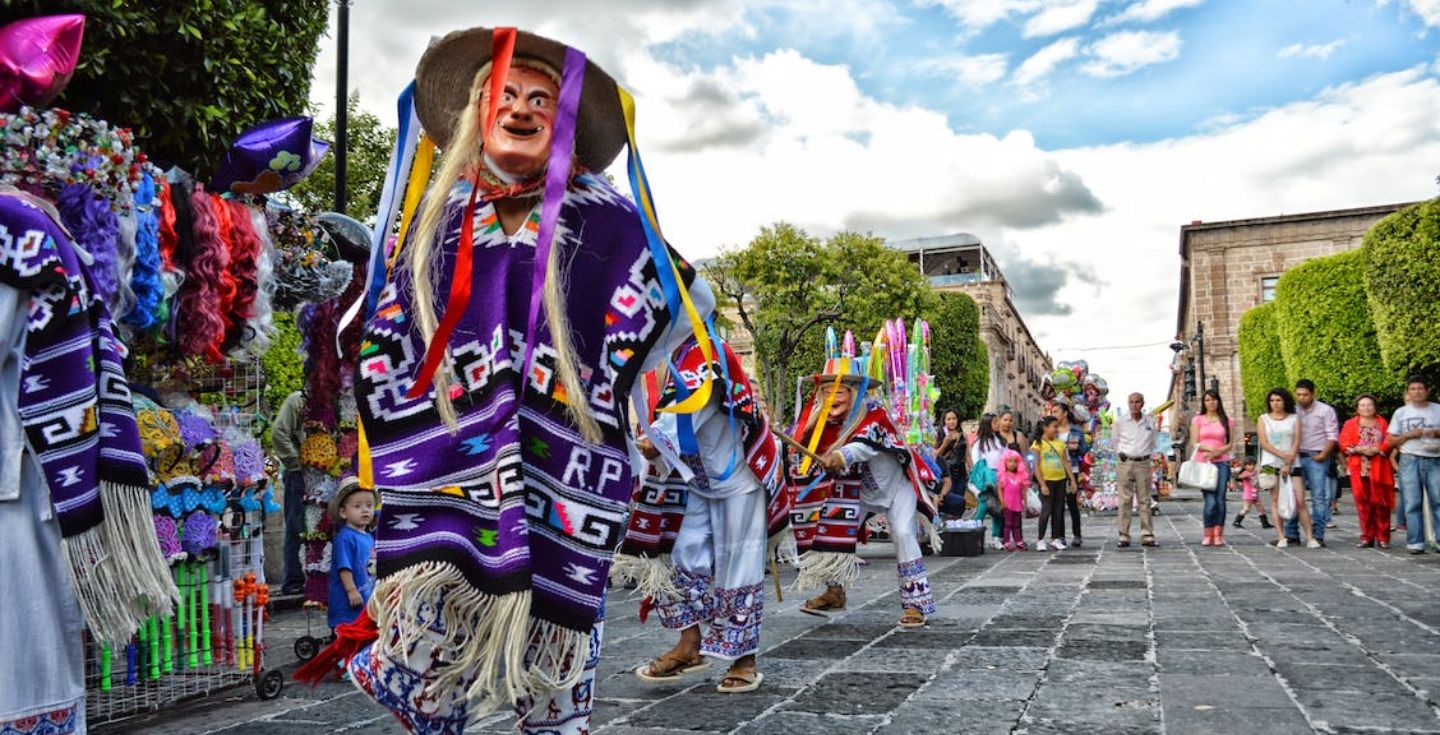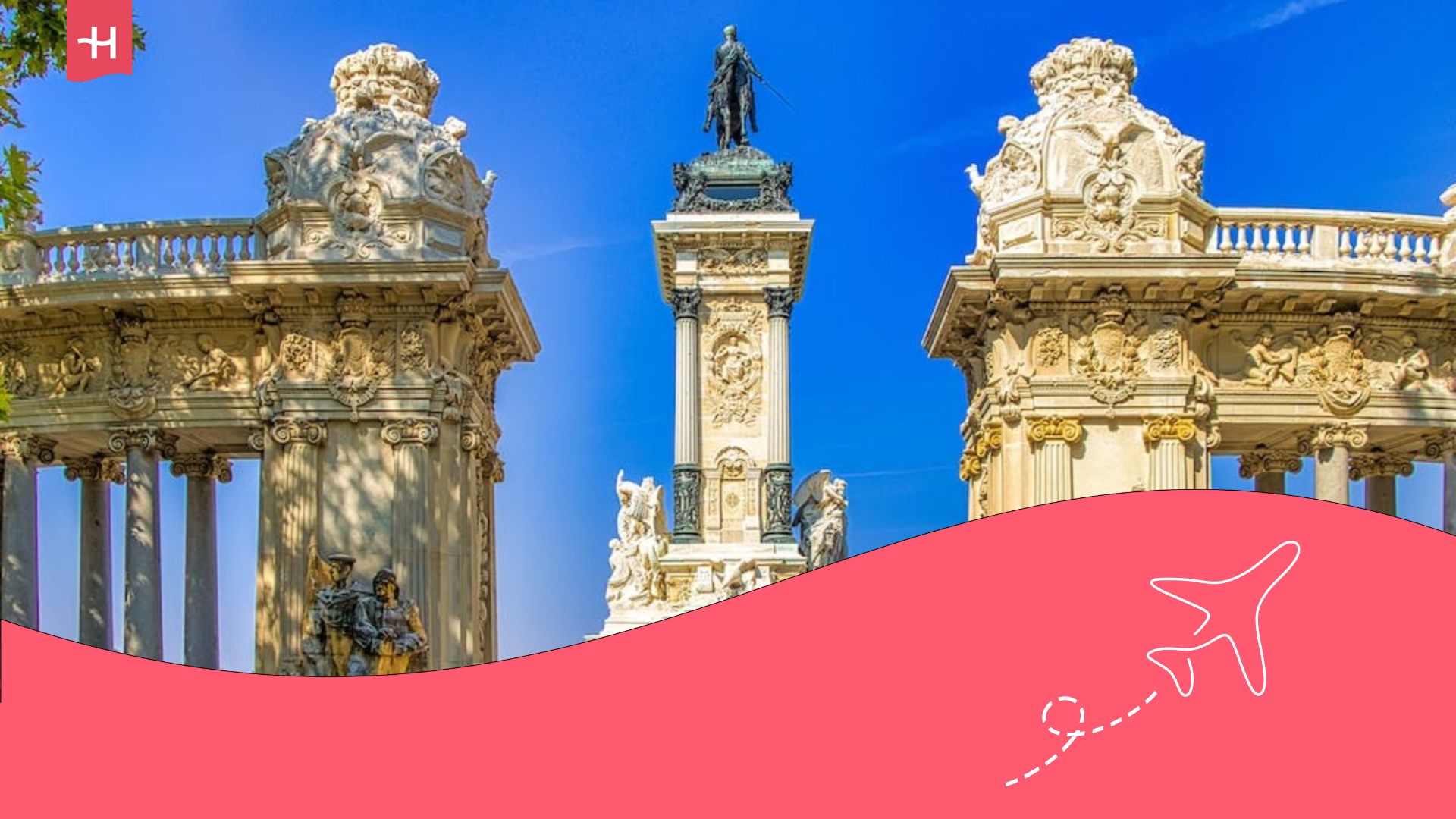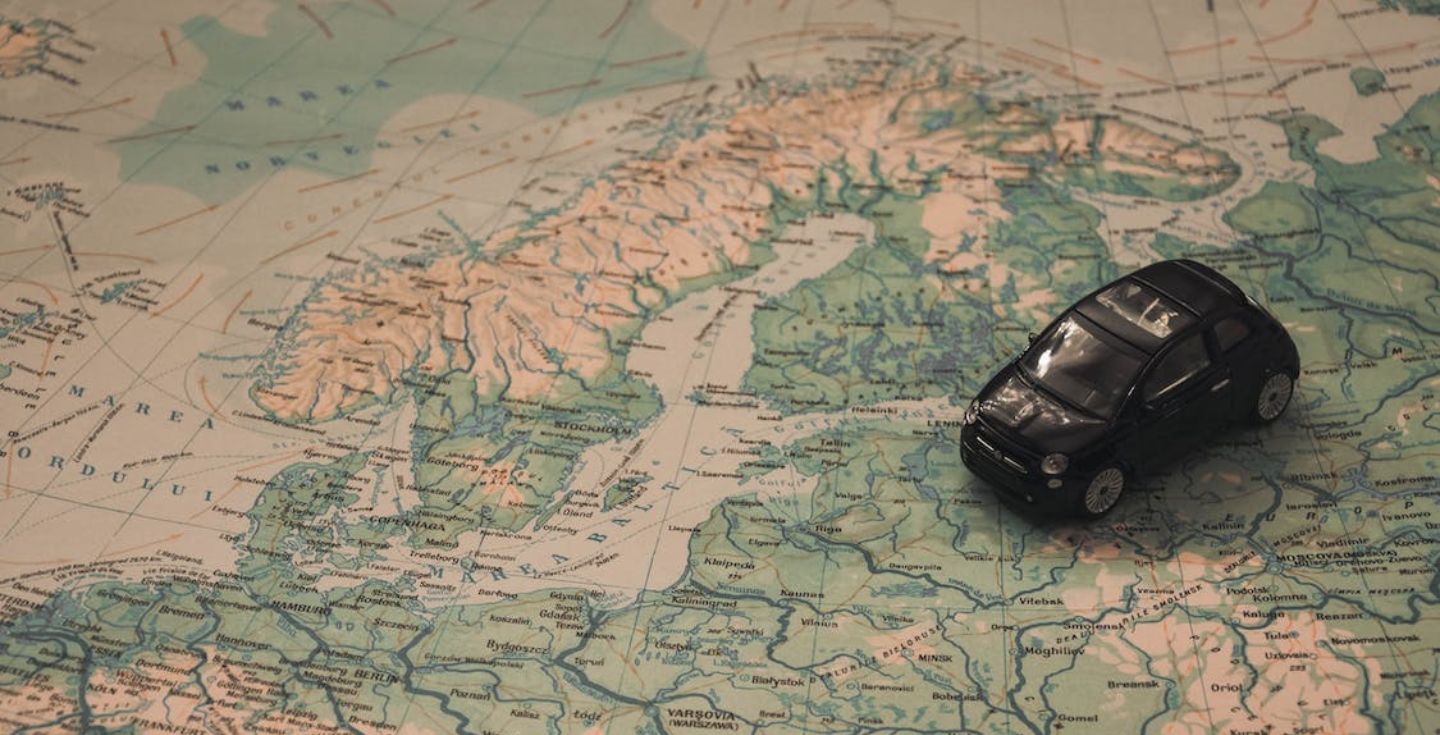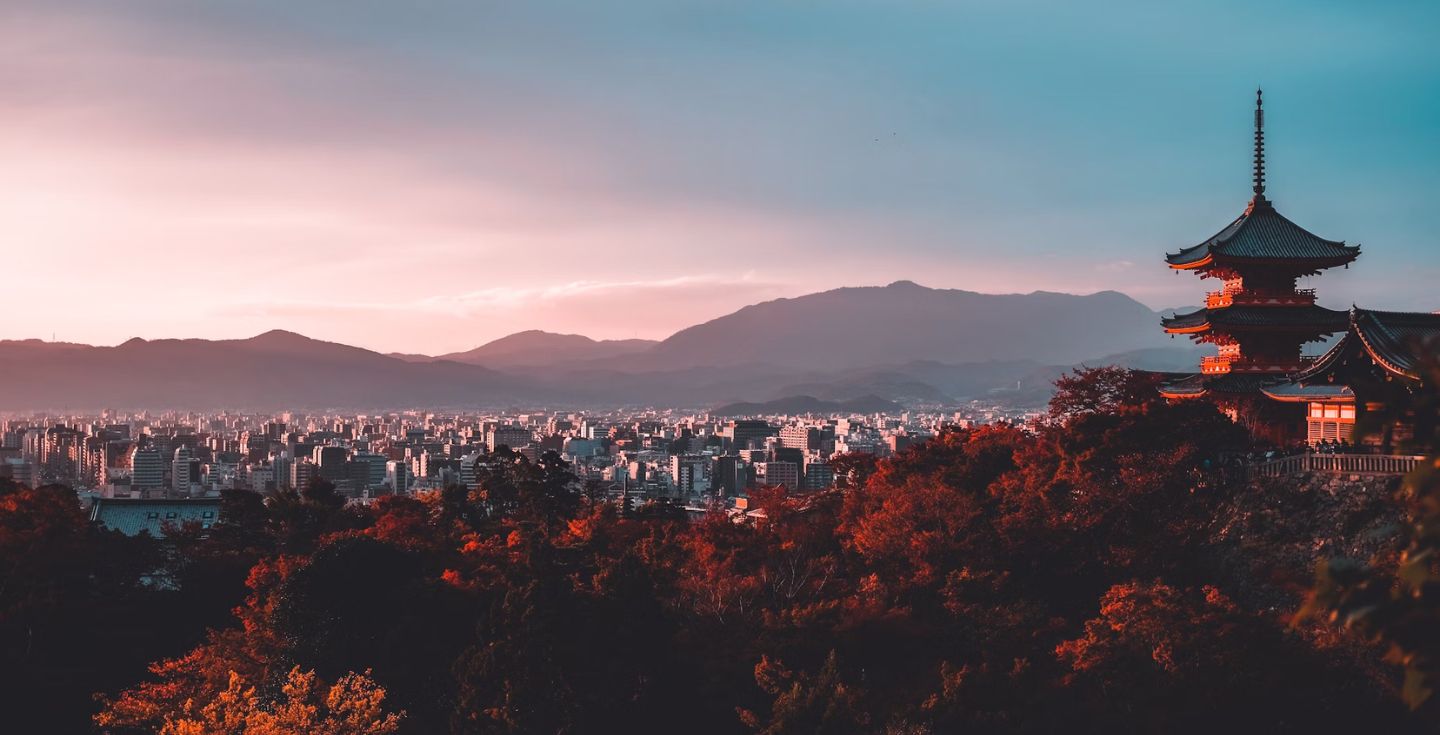Traveling guide for Chile: Tips and more
Read this traveling guide for Chile to find recommendations, tips, information, and all you need to plan your next adventure!
Are you planning to travel to Chile soon? This article is just for you. Here, we will tell you what to expect on your next trip. In this travel guide to Chile, we will give you all the information, tips, and things you should consider to enjoy your Chile trip to the fullest. Find recommendations for all travelers: adventurers, culture lovers, and those who only want to relax in this beautiful destination. Get ready for an unforgettable experience!
Visit Chile: General information
Before traveling, you must consider some essential information to help you fully enjoy your trip. From the different types of weather in the southern hemisphere to local customs, here is a step-by-step guide to planning your adventure with confidence:
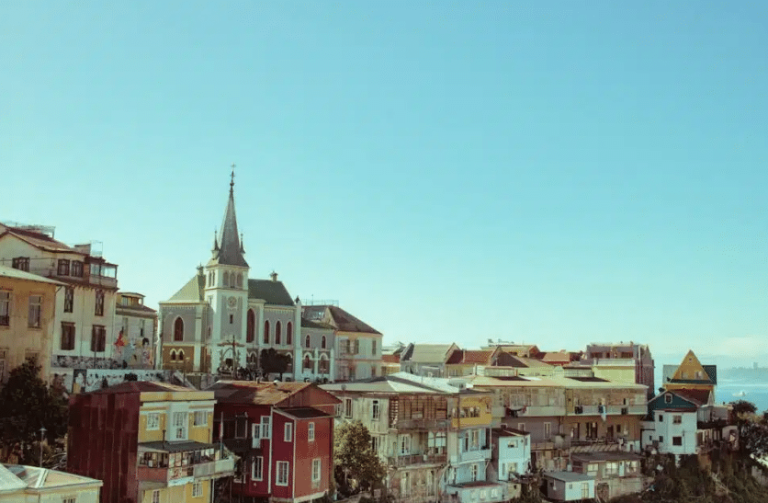
- Surprising Weather: Chile’s unique geography results in surprisingly varied weather. From the driest desert and hot north to the cold and glacial regions of the south, you will be exposed to different weather conditions during your trip. Prepare your suitcase with appropriate clothing; even central Chile cities like Santiago can vary significantly from one moment to the next.
- Cultural Connection: Although Spanish is the official language throughout the country, it is possible to find people who speak English in tourist areas. However, diving into the local culture and learning a few basic Chilean Spanish phrases will let you connect even more with the locals and better understand their culture.
- Currency and Economy: The Chilean peso (CLP) is the official currency. Be sure to exchange currency at banks or authorized exchange houses to obtain the most favorable rates. Chile can be affordable in terms of the cost of living, but prices vary depending on the region. Plan your budget and enjoy a diverse dining experience.
- Schedules and Times: Remember that Chile is in different time zones. While most of the country follows UTC-3 in winter and UTC-4 in summer due to daylight saving time, the Magallanes and the Antarctic Chilean Region remain in UTC-3 throughout the year. Make your plans based on the local time zone to fully enjoy your trip.
Travel guide Chile: What to consider
It is essential to consider some key aspects to have a great experience. First of all, make sure you have the documents required to travel to Chile. Some of these documents are an identification document, a passport, international travel insurance (It is not mandatory, but it is recommended), and a vaccination certificate (Recommended apart from COVID-19 are triple viral, hepatitis A and B, and tetanus-diphtheria) and verifiable financial means.
How the visa and passport policy work in Chile
When traveling to Chile, you can find two essential requirements to enter the country: a visa and a passport. Depending on your nationality, Chile may ask you for one of these documents or even both (which is the most normal).
Nonetheless, there is the possibility that if you are from a specific American country, you can only enter with a passport or even only present your identity document. You can do it without obtaining a visa or passport, according to the official website of the Chilean Ministry of Foreign Affairs. Some tourists will be able to enter only by presenting their identity cards. We are going to tell you more about this below.
If you are from a country that is not on this list, you have nothing to worry about; this only means that you will have to go through the visa process that is commonly required when visiting a foreign country. You can advance this process on the Chilean procedures page, where you must fill out a form and follow the required steps.
Countries that do not require a visa or passport only require an identity card (ID)
- Argentina
- Bolivia
- Brazil
- Colombia
- Ecuador
- Peru
- Uruguay
- Paraguay
Countries that only require a passport but no visa:
- Belize
- Venezuela
- Costa Rica
- Dominican Republic
- Haiti
- The Savior
- Guatemala
- Honduras
- Jamaica
- Nicaragua
- Panama
- St. Lucia
- Surinam
- Trinidad and Tobago
- Guyana
- Dominica
- Grenade
- Saint Kitts and Nevis
- Saint Vincent and the Grenadines
Security in Chile
Chile stands out as one of the safest destinations in Latin America; anyway, it is important to consider security. Tourist places and main cities such as Santiago, Valparaíso, and Viña del Mar are relatively safe, but in urban areas and crowded spaces, you should be cautious. During your trip to Chile, store valuables discreetly and keep your belongings safe.
While most tourist destinations are safe, some outlying areas in large cities may have higher crime rates, so avoid traveling alone through unfamiliar areas at night and look for local safety guidance. Also, take into account the demonstrations and protests that are common in Chile.
Although they are mostly peaceful, it is advisable to keep your distance as a precaution. Also, consider that traffic and driving in Chile can be chaotic, so it is essential to be aware of traffic regulations and pedestrian crossings.
How is the Chilean culture?
During your trip to Chile, you will find a vibrant and diverse culture reflected in its music, art, gastronomy, and ways of life. In the most touristic places, such as Santiago and Valparaíso, you can enjoy a great mix of indigenous traditions and European influences that have shaped the country’s cultural identity.
To respect and dive into the Chilean lifestyle, it is essential to remember the importance of punctuality. Chileans value formality in schedules and expect visitors to do the same. Also, being friendly and cordial with locals will open doors and create genuine connections.
Internet in Chile: Connectivity for Travelers in South America
Chile offers a great telecommunications infrastructure that ensures excellent connectivity in most tourist areas and cities. The main mobile networks, such as Movistar, Claro, Entel, and WOM, provide many options for travelers.
On the other hand, the operator Entel Chile stands out for its comprehensive coverage, including even rural and remote areas. Movistar and Claro also offer good urban and tourist coverage, while WOM in Chile focuses on competitive rates to have internet in Chile. When you arrive, you can get a local SIM card in Chile to get an internet connection and avoid the expensive international roaming service.
However, if you prefer not to use a physical card, you can purchase an international eSIM Chile with data included for your trip offered by providers such as Holafly, one of the best providers in the market. With an eSIM, no strings are attached to a Chilean operator, and you can have the amount of data you need with additional advantages.
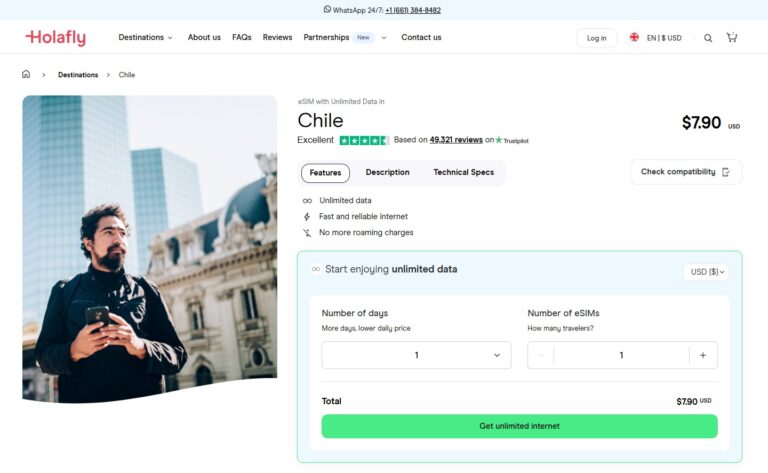
Best dates to travel to Chile
Chile offers exciting experiences throughout the year, but certain times are beautiful for travelers who want to get the most out of their visit. If you love winter sports and snowy landscapes, June to August are perfect for visiting the ski resorts in the Andes. Also, July is the month of the Fiesta de la Virgen del Carmen, a religious holiday celebrated throughout the country with colorful parades and traditional events.
To enjoy your trip to Chile, the spring landscapes, and the bloom of nature, September to November are perfect. September stands out with the celebrations of the Fiestas Patrias, the Chilean Independence Day, where the streets are filled with festivities, food, and music. Spring is also an excellent time to visit the vineyards and try the famous Chilean wines since it is the beginning of the harvest season.
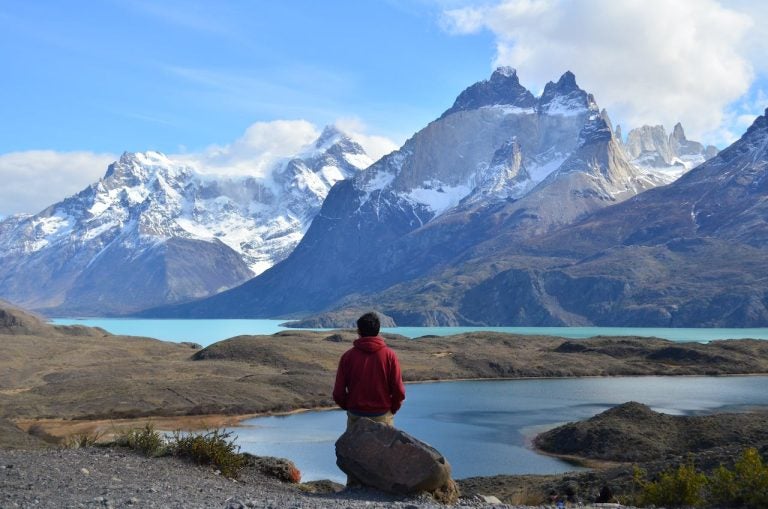
If you are looking for warm weather and amazing beaches, December to February are ideal for exploring the Chilean coast. January stands out with the Viña del Mar Song Festival, one of the most important musical events in Latin America. Also, February is perfect for visiting the Lake District and enjoying outdoor activities like hiking and boating on the lakes.
What is the cheapest month to travel to Chile?
If you want to save money on your trip to Chile, choosing a suitable month can make a big difference in your expenses. Usually, the cheapest months to travel to Chile are during the low season, from May to September. During this period, flights and accommodation are often more affordable, as many airlines and hotels offer discounts to attract travelers looking for sales.
It is important to note that the low season in Chile matches the winter months, which means that the weather in some regions, especially the more southern areas, can be colder and wetter. Nevertheless, if you don’t mind bundling up and enjoying snowy landscapes and winter activities, this can be an excellent opportunity to explore at a lower cost.
How do you get to Chile?
Traveling to Chile is excellent and there are several options depending on your location and travel preferences. Whether you choose direct flights to Santiago or want to explore further with regional connections, remember that your choice will affect your travel experience.
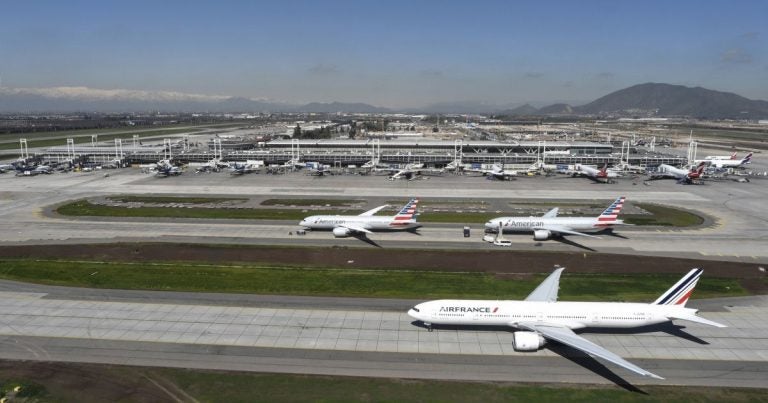
From international flights to overland routes from neighboring countries, each path offers a unique opportunity to begin your unforgettable adventure in this South American destination.
How to get to Chile from North America: Land and Flight Options
If you are in North America and want to explore Chile, you have several options to reach this exciting destination. On land, consider traveling through neighboring countries such as Argentina or Peru, from where you can enter by road through border crossings between Colombia, Ecuador, and finally Argentina, or through Colombia and then Peru.
Anyway, the most common and fastest option is through flights. Several airlines offer direct and daily flights from major North American cities, such as New York, Los Angeles, Mexico City, and Miami, to Santiago, the capital of Chile. If you have just arrived in North America and want to make your trip to Chile, we recommend that you first consider how to have internet in North America so you can avoid roaming charges in this region.
Airline options that provide direct flights to Chile include LATAM Airlines, American Airlines, Delta Air Lines, and United Airlines, letting you arrive quickly and conveniently to start your adventure in this captivating South American country.
Traveling to Chile by Car: Routes and Adventures
From various points in South America, there are land routes that will take you to Chile through neighboring countries, offering you a panoramic view of the region. One of the most popular routes is through Argentina, where you can enter Chile from the Jama Pass from Argentina to San Pedro de Atacama. You will cross the Andes Mountains, giving you impressive views, and you can explore places like Santiago or the Lake District, depending on your chosen route.
Another option is through Peru, where you can enter Chile from cities like Tacna or Arica. As you cross the changing landscape, you will come across beautiful destinations such as the Atacama Desert or the beaches of northern Chile. Of course, do not forget your pillow to travel because the road trip is one of the slowest ways to get to Chile.
Getting to Chile by Plane: International Connections and Airports
Comodoro Arturo Merino Benítez International Airport (SCL) in Santiago is the main gateway, with direct flights from destinations worldwide, including North America, Europe, and other Latin American countries. Santiago is an ideal starting point to explore the capital and its surroundings.
Some of the airlines with which you can access Chile are LATAM Airlines, American Airlines, Delta Air Lines, United Airlines, and others. If your destination is northern Chile, the Diego Aracena International Airport (IQQ) in Iquique or the Cerro Moreno International Airport (ANF) in Antofagasta provide access to the wonders of the Atacama Desert.
On the other hand, if you would like to explore the Lake District, El Tepual International Airport (PMC) in Puerto Montt is an excellent option. For those who want to dive into the beauty of Patagonia, the Presidente Carlos Ibáñez del Campo International Airport (PUQ) in Punta Arenas or the Teniente Julio Gallardo International Airport (PNT) in Puerto Natales are convenient entry points.
Can you travel to Chile by sea?
If you are looking for an alternative and beautiful way to make your trip to Chile, the sea route is an exciting option. Many cruise ships and ferry lines connect Chile with neighboring countries such as Argentina and Peru, offering you a unique experience in the Pacific Ocean.
Although maritime navigation takes longer than other options, it is an opportunity to appreciate the coastal landscapes and discover new perspectives on Chile’s natural beauty. Before embarking, check the itineraries and documentation requirements and consider the possibility of seasickness to enjoy this maritime journey to this destination fully.
To make your planning easier, mobile travel apps like Skyscanner can help you compare options and find the best connections for your adventure.
Chile Travel tips for a culinary adventure
Chilean food is a delicious mix of flavors and traditions. From Patagonia to the arid north, each region has its signature dish. Enjoy a full, traditional breakfast with eggs, meat, and bread anywhere in the country. If you are looking for fresh seafood and fish, the coast is your destination, while in the south, you can try curanto, a feast cooked in a hole in the ground.
Cities like Santiago and Valparaíso offer a vibrant gastronomic scene with restaurants that fuse the traditional with the contemporary, so we could define these two destinations as the main ones to look for a little of each region. Unlike other South American countries, it is also expected to find beautiful wine valleys where wine tasting is an experience you can’t miss.
Among the typical dishes that we should try, we find
- Empanadas de pino: These are baked or fried turnovers filled with ground beef, onions, olives, raisins, and hard-boiled eggs.
- Pastel de choclo: This casserole is made with corn, ground beef, onions, and other vegetables.
- Curanto en hoyo: This is a traditional Chilean dish with seafood, meat, and vegetables cooked in a hole in the ground.
- Ceviche con palta: This is a Chilean take on the famous Peruvian dish ceviche. It is made with fresh fish marinated in citrus juices and onions.
- Completo: This is a Chilean hot dog that is topped with avocado, mayonnaise, ketchup, and mustard.
- Sopapillas: These are fried pumpkin cakes that are often served with pebre or chancaca, a sweet Chilean molasses.

Top 10 Best Cities to Visit in Chile
Chile is full of charming cities that offer unique experiences. For this reason, it is pretty challenging to put together a top 10 because no city is better than another, since each one has a characteristic that makes it unique and worth visiting. Anyway, some of these cities are:
- Valparaíso captivates with its street art and its Bohemian atmosphere.
- Santiago, the capital, offers a mix of the modern and the historical and is an excellent starting point for exploring the country.
- Puerto Varas, in the Lake District, will surprise you with its natural beauty and its views of the volcanoes.
- Viña del Mar: With beaches and exuberant gardens, Viña del Mar is known as the Garden City and is renowned for its international music festival.
- La Serena: With its colonial architecture and nearby beaches, La Serena is a coastal city with a relaxed atmosphere and full of history.
- Antofagasta: With its desert aridity and vibrant port, Antofagasta is an economic and cultural center in Chile.
- Valdivia: Surrounded by rivers and forests, Valdivia is a city with a marked fluvial character and a rich colonial history.
- Pucón: Located in the middle of nature, Pucón is an adventure destination with hot springs and views of the Villarrica volcano.
- Iquique: This city offers golden sand beaches and a mix of historic and modern architecture, as well as water activities.
- Arica: In the far north, Arica is well-known for its warm climate, beaches, and indigenous culture.
What are the 10 best beaches in Chile?
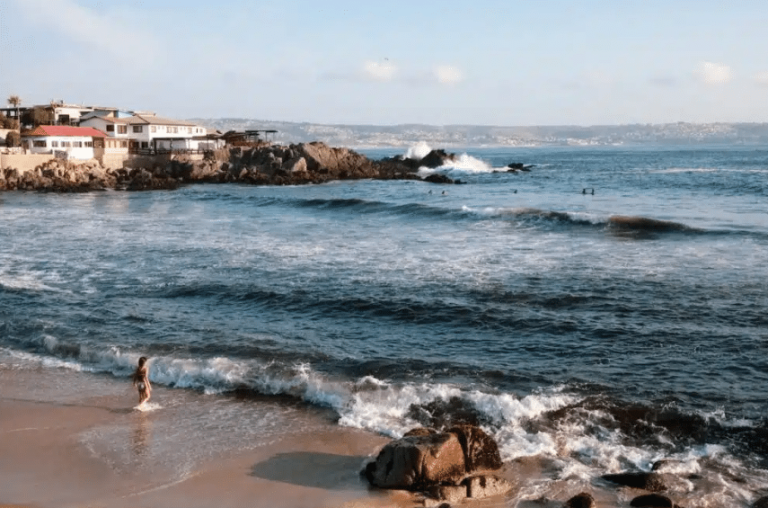
Each beach offers a unique atmosphere from the beautiful Bahía Inglesa to the serene tranquility of Pucón. Some of the bests of this South American country are:
- Bahía Inglesa, Atacama Region: With its turquoise waters and white sands, this beach is a paradise in the desert, ideal for relaxing and practicing water sports.
- Anakena, Easter Island: Surrounded by palm trees and golden sands, Anakena is a jewel in the middle of the Pacific, perfect for swimming and enjoying the tropical surroundings.
- Pucón, Araucanía Region: Located next to Lake Villa Rica and surrounded by mountains, Pucón offers volcanic sand beaches and crystal-clear waters, ideal for relaxation and adventure.
- Matanzas, O’Higgins Region: Famous for its waves, Matanzas is a paradise for windsurfers, kite-surfers, and surfers, as well as offering beautiful views of the ocean.
- Cavancha, Iquique: With its long golden sand beach and warm waters, Cavancha is a popular destination for bathers and lovers of water sports.
- Zapallar, Valparaíso Region: This remarkable beach with calm waters and natural surroundings is a favorite destination for those seeking relaxation and scenic beauty.
- Cocholgüe, Biobío Region: With its rustic and authentic atmosphere, Cocholgüe is ideal for enjoying fresh seafood and the beauty of the sea together with local culture.
- Puerto Viejo, Los Lagos Region: Surrounded by forests and mountains, Puerto Viejo offers quiet beaches and captivating landscapes, perfect for disconnection.
- Pichilemu, O’Higgins Region: Renowned for its ideal waves for surfing, Pichilemu also has beaches to enjoy the sunset and relax.
- Tongoy, Coquimbo Region: It’s extensive beaches and calm waters make it a perfect destination for families to savor fresh seafood
Where is cultural tourism practiced in Chile?
Chile’s rich history is reflected in its cultural heritage. To discover the heritage of the native people, we recommend you visit the Island of Chiloé, where the wooden churches are a World Heritage Site for their years of history and significant contribution to local culture.
On the other hand, another destination that you cannot miss during your trip to Chile is Valparaíso, as this will let you dive into the port’s history and its colorful urban art. The mining town of Sewell takes you back in time to the industrial past. In Santiago, the Museum of Memory and Human Rights connects you with the country’s recent history.
Also, another visit to highlight for the more adventurous is to get to know Chilean Patagonia. Be prepared for long trips because even if you arrive from the nearest Punta Arenas Airport, you will still have to drive 5-6 hours to get to the EcoCamps. Once there, you will know a region of stunning natural beauty, with towering mountains, glaciers, forests, and lakes.
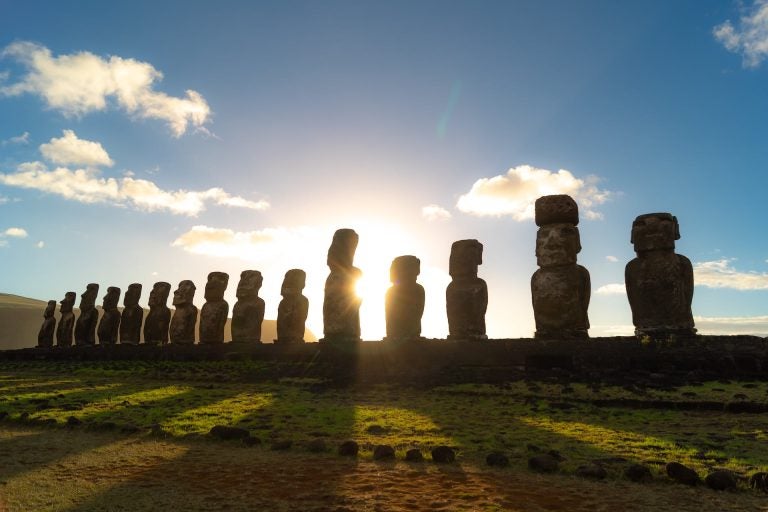
Finally, the last destination we recommend for cultural tourism in Chile is to visit Easter Island, also known as Rapa Nui. This is a remote volcanic island in the southeastern Pacific Ocean. It is a Chilean territory famous for its nearly 900 monumental statues called moai. The moai were created between the 13th and 16th centuries. They are carved human figures with large heads, often resting on huge stone pedestals called ahus.
Where to practice ecotourism in Chile?
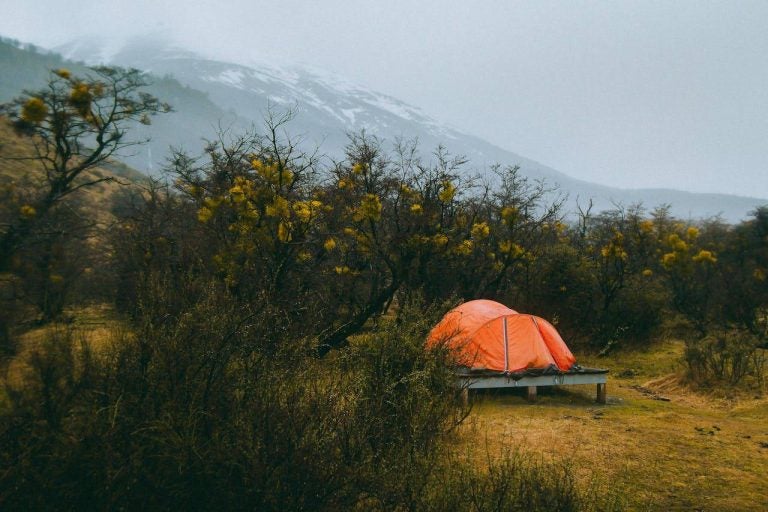
Chile is a paradise for nature lovers. If you are interested in ecotourism during your trip to Chile, places like Torres del Paine are your best option since it is one of the most famous parks in the world, to marvel at its peaks, glaciers, and lakes.
On the other hand, in the Huilo Huilo National Reserve, you will dive into a world of jungle, waterfalls, and lagoons. Finally, the Route of the Parks will take you through a chain of national parks, each with its beauty. In every corner of the country, you will find opportunities for hiking, wildlife watching, and connection with nature.
San Pedro de Atacama
We want to make a special mention of this town in northern Chile for all it offers for nature tourism. it is located in the Atacama Desert, one of the driest places on Earth. The city is a popular tourist destination known for its impressive natural landscapes, such as geysers, salt flats, and volcanoes. Some of the most recommended activities are:
- Visit the El Tatio Geysers. El Tatio is the largest geyser field in the Southern Hemisphere. Over 80 active geysers are in the area, and you can see steam and hot water shooting up into the air.
- See the Atacama Salt Flat. The Atacama Salt Flat is one of the most extensive salt flats in the world. It is a vast white landscape that is perfect for stargazing.
- Visit the Valle de la Luna. The Valley of the Moon is a strange and beautiful landscape reminiscent of the moon. There are dunes, rock formations, and salt flats in the valley.
- Hike to the top of Volcan Lascar. Volcan Lascar is an active volcano that offers stunning views of the surrounding area. The hike to the top is challenging, but it is worth it for the views.
- Learn about the Atacama culture. The Atacama Desert is home to a number of indigenous people, including the Atacameños. There are some museums and cultural centers in San Pedro de Atacama where you can learn about the Atacameño culture.
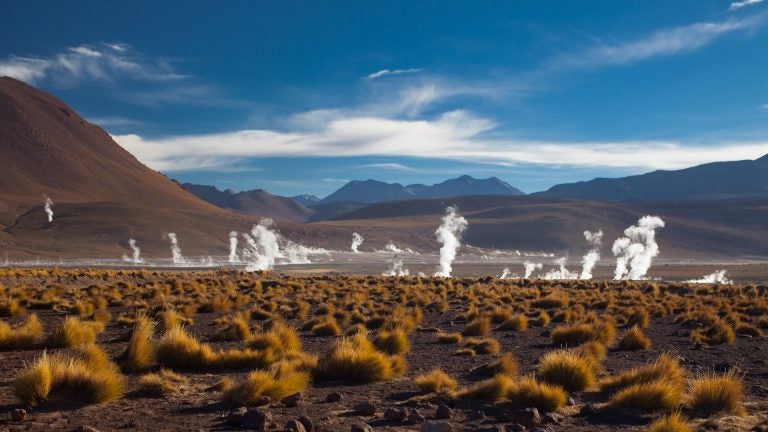
San Pedro de Atacama is a unique and fascinating place. It is a great place to learn about nature, culture, and history. If you are planning a trip to Chile, adding San Pedro de Atacama to your itinerary is highly recommended.
How public transport works in Chile
Public transport in Chile, especially the Santiago Metro (Metro DF), is an effective and safe option to move around the city. With six lines that cross key areas, the Metro DF is the backbone of the system, offering short wait times, train frequencies of 5-10 minutes at peak times, and 15-20 minutes at other times. With strict security protocols and constant surveillance, the metro is reliable and comfortable for passengers.
Also, the network of urban buses complements this mobility offer, covering areas that the metro does not directly cover. The combination of options lets you explore Chile in an accessible and convenient way.
Public transport, apps, DF metro, flights
During your trip to Chile, having an efficient public transport system lets you quickly move around the cities. The Santiago metro, known as Metro DF, is a convenient and fast option to move around the capital. You will also find urban buses and buses that will take you to different parts of the city and its surroundings. Also, apps like Skyscanner will help you compare and find domestic and international flights, ensuring the best rates and options.
When flying within Chile, several airlines offer connections between major cities. LATAM Airlines, Sky Airlines, and JetSMART are some options that provide domestic flights, allowing you to quickly reach destinations such as the Lake District, Antofagasta, and more.
What to buy in Chile
During your trip to Chile, you will find various souvenirs and local products to take home. Do not miss the opportunity to buy Chilean wines, famous worldwide for their excellent quality. Also, handicrafts such as ponchos, blankets, and jewelry inspired by the Mapuche indigenous culture are unique treasures.
If you are a fashion lover, look for wool and alpaca clothing in the local markets. For lovers of gastronomy, ulmo honey and products derived from cochayuyo are authentic Chilean delicacies you should try.
Best places to buy in Chile
Chile offers a diverse shopping experience, from local markets to luxury boutiques. If you are looking for authentic handicrafts and souvenirs, markets like La Vega Central in Santiago and the Mercado Municipal de Valparaíso are excellent options.
The cities also have commercial areas, such as Paseo Ahumada in Santiago, where you will find fashion stores and local products. For a unique experience, explore the Santa Lucía Artisan Fair in Santiago, which offers a variety of traditional items in a beautiful setting.
What is the cheapest thing to buy in Chile?
Chile offers some cheap shopping opportunities that can vary depending on your interests. Local farm products, such as fruits, vegetables, and nuts, are often affordable and fresh at local markets. Regarding souvenirs, keychains, magnets, and small items are often affordable options to take with you.
Also, public transport, such as the metro in Santiago and the Transantiago, offers reasonable rates to move around the city. To save on dining, look for ‘Menus del Dia’ (Menu of the Day) at local restaurants, which offer full meals at affordable prices.
Frequent questions about traveling to Chile
The ideal duration of your trip will depend on your interests and chosen destinations. For a full scan, consider at least two weeks. However, even a week-long getaway will let you enjoy some of the highlights.
Yes, Chile is an excellent option for digital nomads. Major cities have the technological infrastructure, coworking spaces, and reliable internet connections that make working while traveling an attractive option.
The budget varies depending on the style of travel and the duration. On average, a traveler might expect around $50 to $100 per day for lodging, food, and activities, though this can vary widely.
Yes, credit cards are widely accepted during your trip to Chile, especially in cities and tourist areas. Nonetheless, it is advisable to carry cash in local currency for smaller places or local markets.





 Language
Language 


















 No results found
No results found






